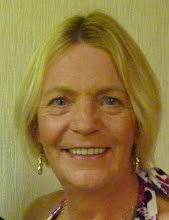A slightly tenuous to link to JRR but he spent some time near Stonyhurst College, which was on the route walked on saturday.
We started at Hurst Green, a village on the road from Whalley to Longridge. We set off from the village across a couple of field. where it was lovely to see lots of lambs, towards Stonyhurst College, a private school with a long history and several famous ex pupils. On the way we skirted a wood, where many birds could be heard but despite my binoculars I was unable to spot anything although definitely heard a woodpecker and some noisy pheasants. We reached the college by the playing fields and after passing the Observatory, continued on with the main buildings on our left.
As we left the college behind we crossed a small road and walked up a farm road until we reached a wooded valley, we continued the edge of the wood until we reached a stile which led us onto the wood and down a series of wooden steps until we reach the botton of the valley where we crossed a stream by a wooden bridge. Just by this bridge was a well built stone bridge, which seemed a little out of place, however on checking the area later there seems to have been a mill there many years ago ago, although no trace of this remains.
The stream flowed into the River Hodder, but our route took us uphill by track that lead from the bridge. At the top of the track was a fine house called Hodder Lodge, this was built be the owner of the mill and later passed to Stoneyhurst college and was used as a prep school before it was converted into flats. The track then led down hill and we reached the bank of the Hodder. We now followed the river downsteam passing a weir built to monitor the water flow and also a tree that looked like it was standing on its roots, it reminded me of an Ent from Lord of the Rings.
I wondered if it was like that when Tolkien was there and gave him the idea for Ents ( trees that walked and spoke). Many birds here but nothing unusual,just tits and finches. We continued to follow the river until we reached the Whalley road where apart from the road bridge there are the remains of an old packhorse bridge the arches are still standing but most of the top has vanished, this is called Cromwell's bridge as he supposedly crossed it with his army on a march from Skipton to Preston.
W now left the river and walked along the road up the hill for a few hundred yards until we climbed a stile and and set off across fields where we could look to our left and see the river stretching back (pictured). we soon reached another tarmaced track which we followed down towards a farm, we crossed the farmyard and left the farm through a gate which found us at t he confluence of the Hodder and the Ribble. A well provided bench was a good place to stop for a bite to eat, but it soon became chilly sitting still, so we continued walking along the bank of the Ribble.
Lots of birds were darting above us, which I am sure were sand martins, There were lots of sheep and lambs grazing in the fields here and it was quite funny at one point to see all the sheep on the grass and all the lambs down by the river. On the river there were the usual mallards but also I was quite surprised see oystercatchers considering how far from the sea we were and also a pair of Goosander. We soon came to where the river Calder flows into the Ribble, first the Hodder and then the Calder (hotter and colder he he). On the far bank is Hacking Hall, which was built in the early 1700s.
Although the river was flowing quite slowly I was surprised to see a lot of debris in the bushes by the water and also in the shallows, presumable leftover from last years floods, there were also quite a lot of fishermen around (was it salmon season?) Eventually we reached an aquadust which spans the river by three arches, another unusal sight here was a flock of curlews (well they sounded like curlews, never seen a flock of them before though). Just after the aquaduct we left the river and climded through a wood to reach farm fields which lead up the hill and into the carpark of the Shireburn Arms, across the road from where I had parked the car.
The walk, which was about 5 and a half miles took us just a about 4 hours, was for the most part easy going, although the climb at the end pulled on the leg muscles. It was relatively quiet too, we didnt see many other walkers and the ones we did see were going the opposite way. The countryside we walked though made a pleasant change from the Derbyshire Dales.
-----
Subscribe to:
Post Comments (Atom)



No comments:
Post a Comment